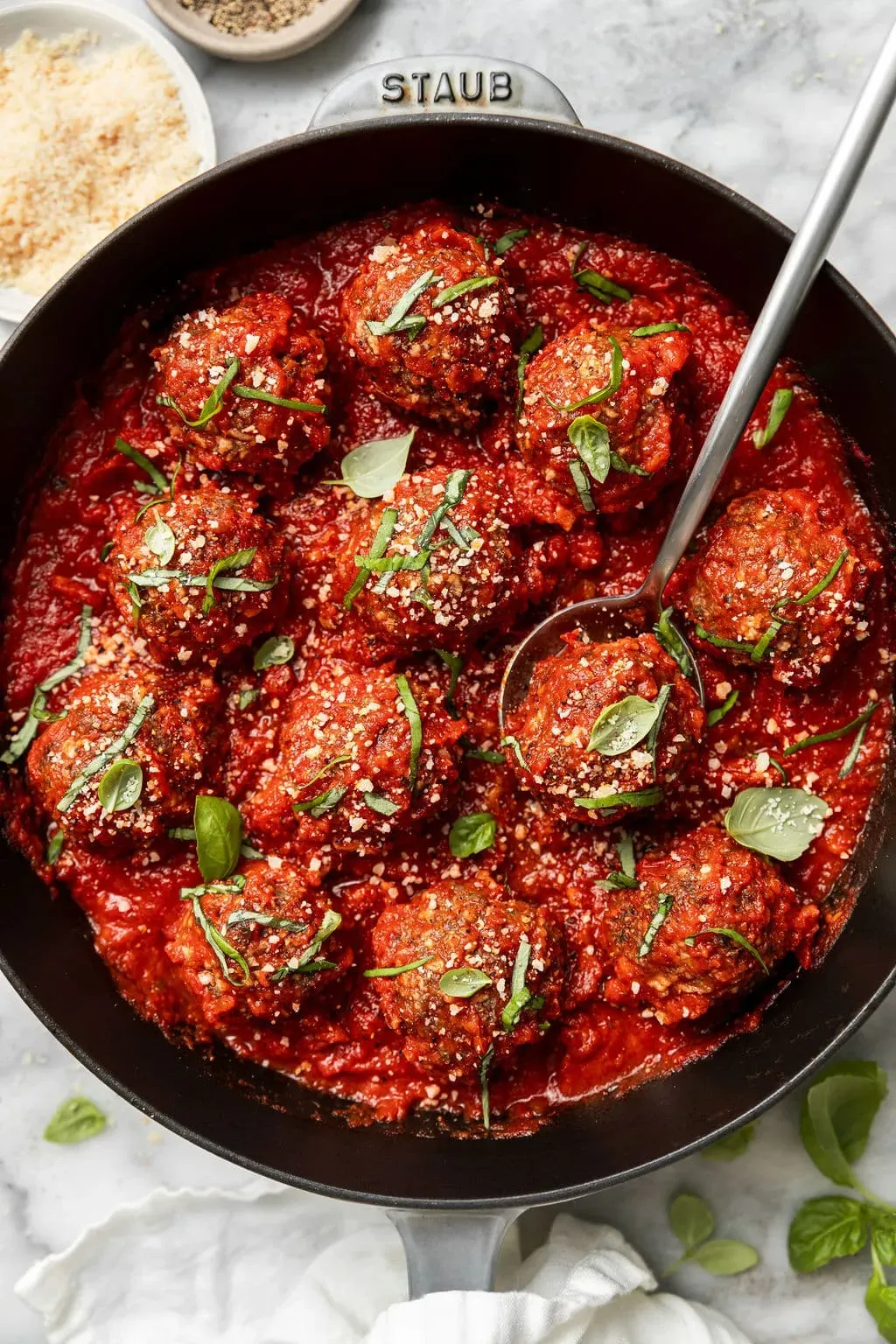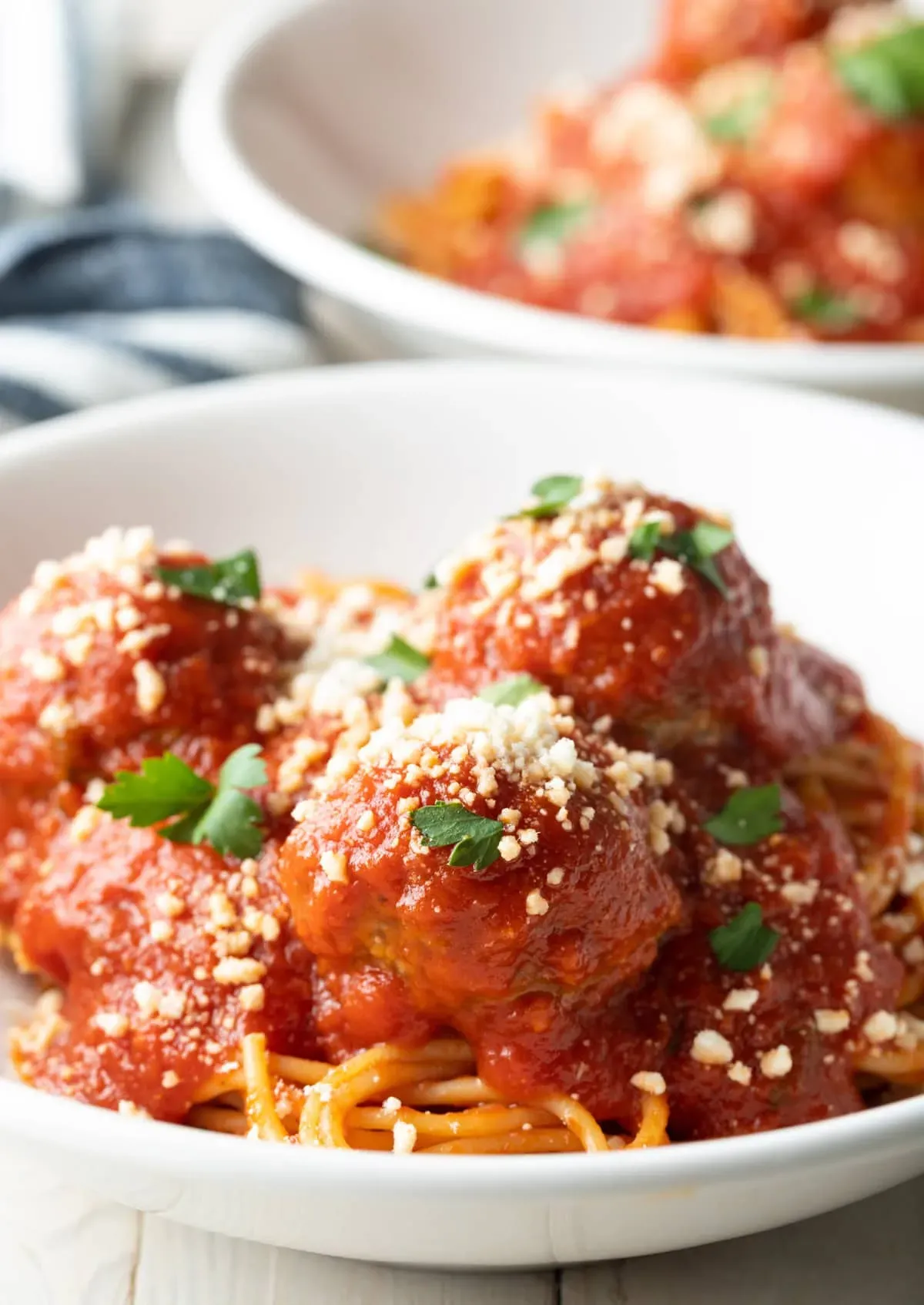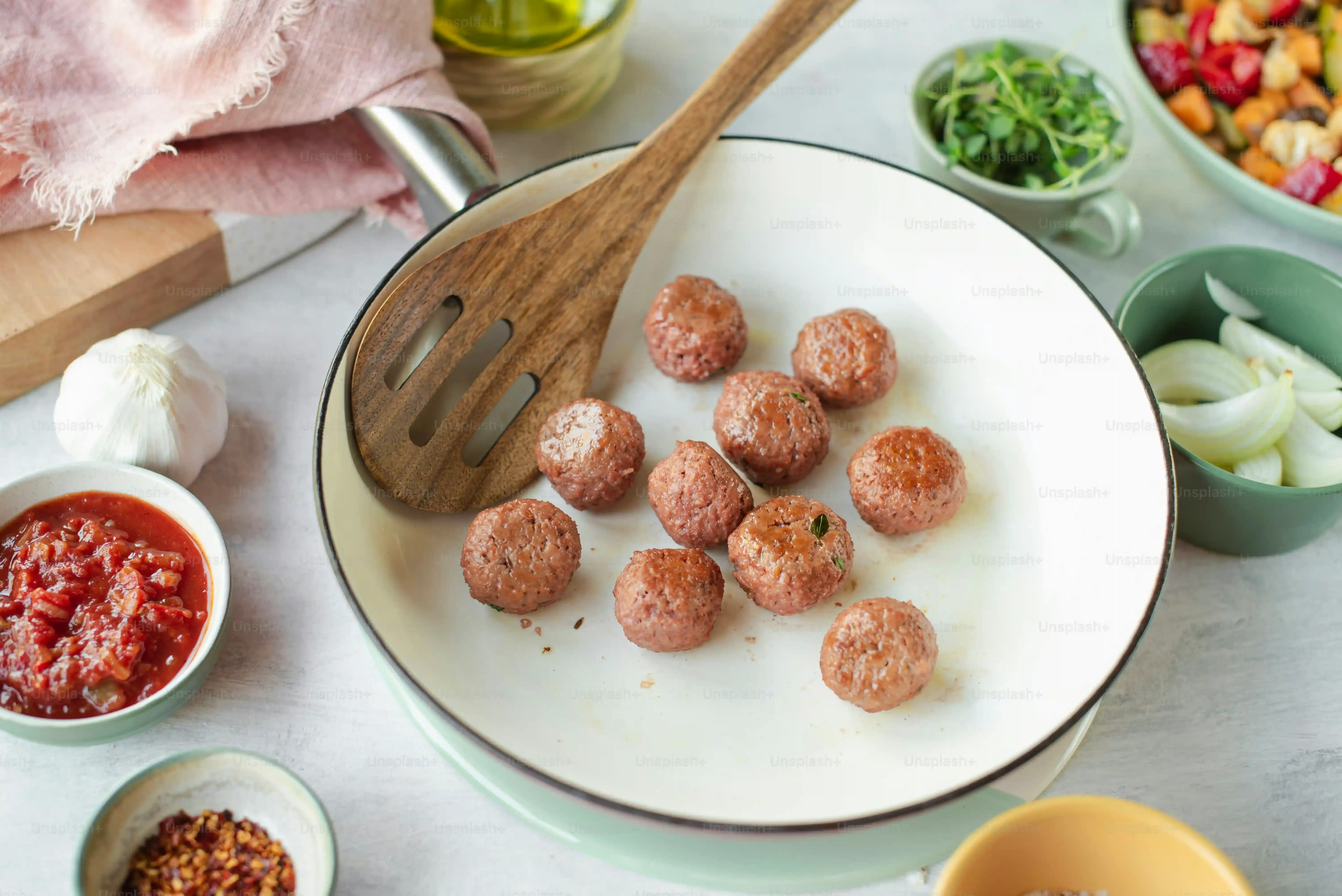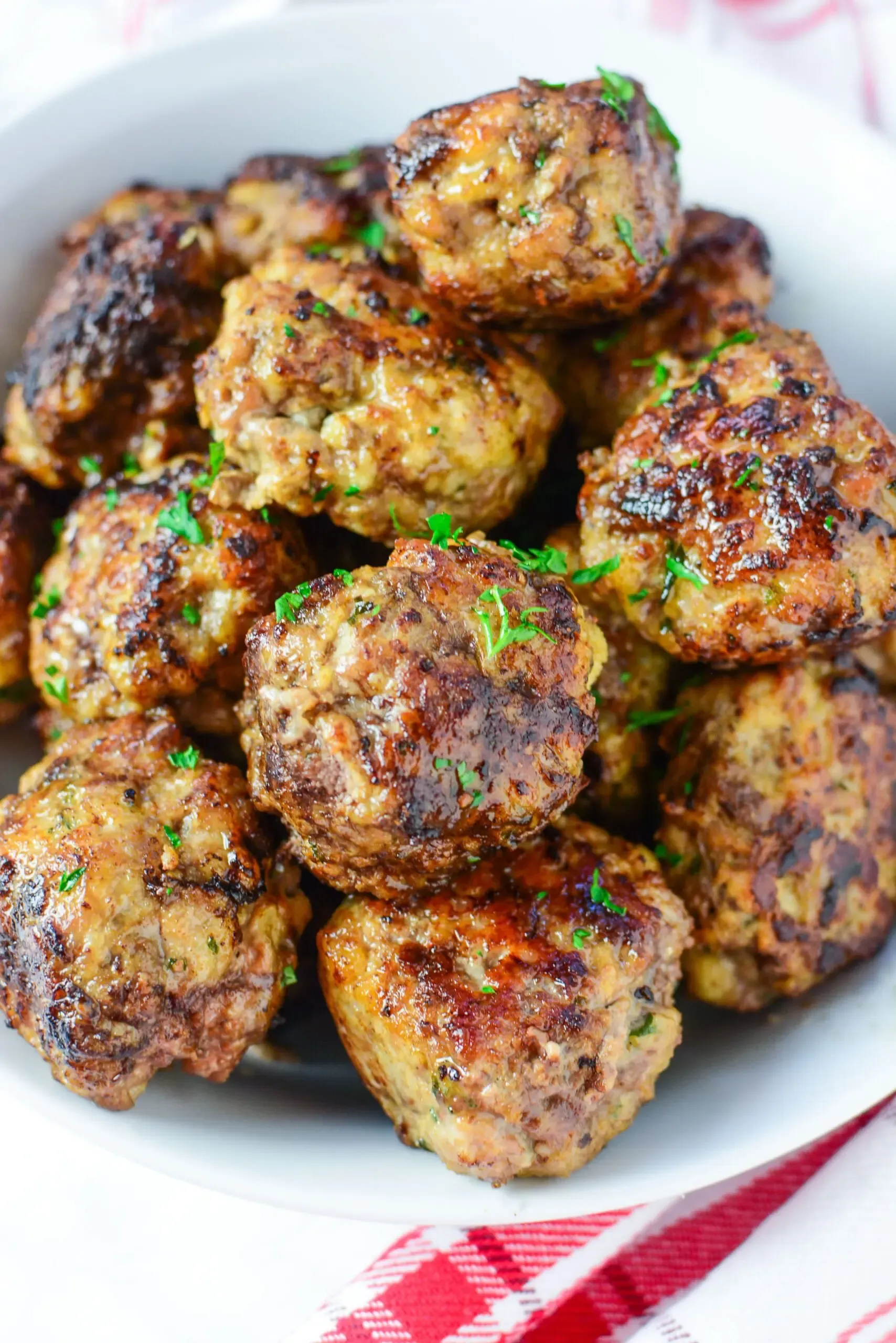Table of Contents
Let's be honest, frying meatballs can be a messy business. You stand over a hot pan, oil splatters everywhere, and you're constantly flipping to avoid burning one side while the other stays pale. And sometimes, despite all that effort, they end up a little... dry. It's a common kitchen woe for anyone craving that classic comfort food.
Why Baking Beats Frying for Italian Meatballs

Why Baking Beats Frying for Italian Meatballs
The Splatter Zone vs. Simple Silence
Look, we've all been there. You heat up the oil, drop in those carefully rolled meatballs, and suddenly your kitchen looks like a crime scene of tomato sauce and grease. The pan demands constant attention, a spatula always in hand, trying to coax each meatball into browning evenly without burning to a crisp. It's a high-maintenance operation, frankly, and the results can be frustratingly inconsistent – some are perfect, some are pale, some are charred little hockey pucks.
Consistency, Clean-Up, and Glorious Juiciness
Now, consider the alternative. You roll your meatballs, place them neatly on a baking sheet, and slide them into a hot oven. That's pretty much it for the active work. The oven's dry heat surrounds them, cooking them through evenly from all sides. No splattering oil, no frantic flipping, just beautifully browned meatballs emerging from the heat. This is the core advantage when discussing Why Baking Beats Frying for Italian Meatballs. It’s less mess, less stress, and crucially, it helps the meatballs retain their moisture, leading to a far juicier bite than their pan-fried cousins often achieve.
- Less active cooking time
- Significantly less mess and splatter
- More consistent, even cooking
- Meatballs retain more moisture
- Frees you up to make sauce or pasta
Mastering the Base: The Essential Recipe Italian Meatballs Baked

Mastering the Base: The Essential Recipe Italian Meatballs Baked
Building the Flavor Foundation
Alright, so you're sold on baking. Great. Now let's talk about what actually goes *into* those magical little spheres. This isn't just about mixing meat and hoping for the best. The base of any killer recipe italian meatballs baked hinges on a few key components that work together to create that tender, flavorful bite we're all chasing. Think of it as laying the groundwork for deliciousness. You need the right blend of meats, a solid binder to keep things together without making them tough, and your essential flavor boosters.
Picking Your Players: Ingredients That Make or Break Your Recipe Italian Meatballs Baked

Picking Your Players: Ingredients That Make or Break Your Recipe Italian Meatballs Baked
Picking Your Players: Ingredients That Make or Break Your Recipe Italian Meatballs Baked
you’re ready to mix. But hold up – the quality and type of ingredients you toss into that bowl matter. A lot. You can have the best baking method in the world, but if your foundation is weak, your meatballs will be too. This is where your specific recipe italian meatballs baked really starts to take shape. We're talking about the meat blend, the binder that keeps them tender and together (not like little rocks), and those all-important flavorings that scream "Italian comfort food." Skimp here, and you'll know it.
What's in your ideal meatball mix?
- Ground Beef (usually 80/20 for moisture)
- Ground Pork (adds richness and tenderness)
- Sometimes Veal (for a lighter texture, if you're feeling fancy)
- Breadcrumbs (the binder, crucial for texture)
- Eggs (another binder, adds richness)
- Milk or Water (soaks the breadcrumbs, keeping things moist)
- Parmesan Cheese (non-negotiable flavor bomb)
- Fresh Garlic (because powdered garlic is a crime)
- Fresh Parsley (brightens everything up)
- Salt and Black Pepper (season generously, but taste!)
The Heat is On: Baking Your Recipe Italian Meatballs Baked to Perfection

The Heat is On: Baking Your Recipe Italian Meatballs Baked to Perfection
Getting Your Oven Ready for Meatball Magic
you've mixed your ingredients, rolled your perfect little spheres, and they're sitting there looking promising on a plate. Now comes the easy part, the part that makes baking a recipe italian meatballs baked so appealing compared to the frying chaos. First things first: get that oven hot. Like, really hot. We're looking for a high heat that will quickly brown the outside and seal in those precious juices. Don't just guess; use an oven thermometer if you have one. A properly preheated oven is non-negotiable for that nice crust.
While the oven heats up, prepare your baking sheet. A simple rimmed baking sheet lined with parchment paper or foil is your best friend here. Parchment paper makes cleanup a breeze, and you won't have meatballs sticking. Arrange your meatballs in a single layer, giving them a little space so they brown rather than steam. Crowding is the enemy of a good crust.
Temperature and Time: The Sweet Spot for Baking
So, what's the magic number? Generally, you want an oven temperature between 375°F and 400°F (190°C to 200°C). This range hits the sweet spot for browning without drying them out. The exact time will vary based on the size of your meatballs and your oven's quirks, but typically, they need about 20 to 30 minutes. You'll see them start to brown nicely on the bottom after about 10-15 minutes, and you can give the pan a gentle shake or flip them carefully halfway through for more even color, though it's often not strictly necessary with this method.
Remember, we're aiming for cooked through and juicy, not dry and sad. Overbaking is a common pitfall, turning your tender meatballs into something you could probably bounce off the floor. Keep an eye on them, especially the first time you try your specific recipe italian meatballs baked in your oven.
Meatball Size | Approximate Baking Time (400°F / 200°C) | What to Look For |
|---|---|---|
Small (1-inch) | 18-22 minutes | Firm to the touch, browned outside |
Medium (1.5-inch) | 22-28 minutes | Firm, browned, juices run clear |
Large (2-inch) | 28-35 minutes | Firm center, deep brown crust |
Knowing When They're Done (Hint: It's Not Just the Color)
How do you know your beautiful baked meatballs are truly finished? Color is a good indicator – you want a nice, even brown all around. But the most reliable sign is the internal temperature. A meat thermometer inserted into the center of a meatball should read 160°F (71°C) for beef and pork mixtures. This ensures they are safely cooked without being overdone.
Another way to check is to cut one open (sacrificing one for the greater good is acceptable). The inside should be cooked through with no pink, and the juices should run clear. If you see any hint of pink, give them a few more minutes and check again. Pull them out as soon as they hit that temperature or visual cue to preserve maximum juiciness. They'll continue to cook slightly from residual heat after they come out of the oven.
Beyond the Pan: Serving Your Delicious Baked Meatballs

Beyond the Pan: Serving Your Delicious Baked Meatballs
The Grand Finale: Getting Those Meatballs to the Plate
Alright, you've successfully navigated the baking process. Your kitchen smells amazing, and you have a tray of beautifully browned, juicy meatballs. Now what? This is where the fun really begins. While a classic spaghetti and meatballs is the obvious and eternally correct answer for your recipe italian meatballs baked, don't feel limited. These little flavor bombs are incredibly versatile. Toss them with your favorite marinara, nestle them in a crusty sub roll with some melted provolone for a killer meatball sub, or even serve them on their own as an appetizer with a side of dipping sauce. They hold their shape well, making them perfect for soaking up sauce without falling apart like some pan-fried versions can. Just try to resist eating half of them straight off the pan.
Your New Go-To Meatball Method
So there you have it. Baking your Italian meatballs isn't just a less messy alternative to frying; it's a genuinely better way to achieve that ideal texture and flavor. No more dry, unevenly cooked frustration. Just consistently tender, juicy meatballs ready for pasta, subs, or just eating straight from the pan (no judgment here). Give this recipe italian meatballs baked a shot, and you might just find yourself permanently retired from the frying game. Your kitchen (and your taste buds) will thank you.